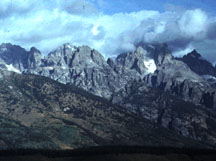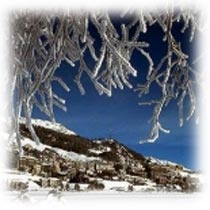|
Location. In a very formal and exact manner said, Maramures County is one of the northernmost provinces of Romania and may be located on a map between the parallels of 47o20'00" and 48o00'15" North latitude and the meridians of 22o52'30"
and 25o07'30" East longitude. It covers an area of 6304 km2.
In the North the river Tisa and the ridge of the Maramures Mountains make up the county's natural border with Ukraine. To
the East, over the Prislop Pass stretches the historical province of Moldavia (Suceava county). To the south-east, beyond the
Rodna Mountains, there is Bistrita-Nasaud county, with the legendary abode of Count Dracula. The counties of Cluj and
Salaj lie to the South and the flatland of Satu Mare county extend to the West up to the Hungarian border.
 Relief
. Morphologically varied, the land of Maramures ranges from 200 to 2300 m above sea level. There are several land regions in Maramures: Relief
. Morphologically varied, the land of Maramures ranges from 200 to 2300 m above sea level. There are several land regions in Maramures:
- 43 % of mountains
- 30 % of hills and plateaux
- 27 % of flatlands and meadows
It is in Maramures tha the Eastern Carpathians - the 300 km long natural divide between Moldavia and Transylvania - reach their highest altitude with Mount Pietrosu (2303 m) in Rodna Mountains.
The volcanic ridge of Gutai-Tibles crossing the country in the middle as well as the northernmost Mountains of Maramures are also part of the Eastern Carpathians.
These mountain ridges confine a depression that is known as the "historic province of Maramures", cradle of legend and original civilisation.
Rivers and lakes. The rainy climate feeds a dense river system that totals 3000 km. Two river systems - the Tisa and the Somes - drain the country. The Tisa drains the
rivers that flow down the surrounding mountains and across the Maramures basin: Viseu, Ruscova and Iza with their tributaries, such as the Mara and Cosau rivers.The
Somes drains the rivers in the south-eastern part of the country: the Salaj river and Lapus with its main tributaries Cavnic and Sasar.
Various natural lakes dot the landscape. The alpine lakes of Iezer and Buhaescu are of glacial origin. The beautiful Albastru
lake by Baia Sprie was formed when a mine pit caved in. A similar phenomenon - the collapse of a salt mine - gave birth to the lakes at Ocna Sugatag.
Several man-made dams have created artificial lakes: the Stramtori-Firiza reservoir (of about 18 million m3), the Runcu-Brazi-Firiza reservoir (under construction) or the smaller lakes of Nistru and Bodi.
|